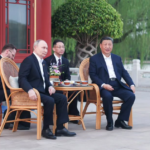GOVERNANCE in India continues to suffer the populism unleashed in 1980s by Vishwanath Pratap Singh in his bid to seize power. A junior politician till Sanjay Gandhi took fancy to him, VP Singh was pitchforked as Chief Minister of Uttar Pradesh in 1980.
Singh’s tenure in UP was marked by encounters against dacoits; the phenomenon called Phoolan Devi (a Backward, Mallah by caste, who killed Rajputs) was the byproduct of Singh’s populism. Unfortunate slaying of Singh’s brother by dacoits put an end to the nightmare and he quit as the Chief Minister. As Union minister, thereafter, he flagged the Bofors issue. This unsolved CBI case cost Rajiv Gandhi power and Singh rode to power on his slogan, “Paisa khaya kaun dalal?” As the Prime Minister, identity of the “dalal” eluded him. His regime, backed by the Left and the Right political forces, was threatened when BJP unleashed the Ram Mandir agitation and LK Advani’s rath rolled from Somnath. The sadhus’ predominance in the Mandir movement earned it the epithet Kamandal. To counter this popular movement led by the cadre-based BJP, Singh relied on the Mandal Commission report which advocated reservations for the Backward Castes. Thus, Mandal was used to thwart Kamandal. Singh’s short-lived minority government fell by the weight of inherent contradictions. But, his legacy of Bofors still dogs government procurement, especially for the armed forces. Most officers prefer to retire honourably. They prefer not to take decisions which may make the CBI visit them post-retirement because allegations against procurement decisions became the norm after Bofors. And Mandal, implemented in haste, has left many sections dissatisfied and agitations continue.
The Jat agitation, originating from Haryana, which has been rocking the National Capital Region, is an offshoot of the hastily implemented Mandal decision. Jats have been seeking benefits of Affirmative Action accorded to Other Backward Castes (OBCs) since Mandal was implemented in 1991. Many studies have been conducted by the National Backward Castes Commission (NCBC), the Indian Institute of Public Administration (IIPA) and even by the Indian Council of Social Sciences Research (ICSSR). To get benefit of OBC status, a community has to meet three criteria: it must be socially, educationally and economically backward. Studies have shown that Jats meet the requirement of backwardness only partially.
In Haryana, where the present agitation has originated, the community is educationally below but socially and economically above the threshold. It is well represented in the State’s administration. Most CMs of the State have been Jats. Figures differ in UP, Uttarakhand, Rajasthan, Madhya Pradesh, Chhattisgarh and Delhi, the other States where there is Jat population. Benefits have been extended in these States. Following the 2016 agitation, which has been revived this year, a Bill had been passed by the Haryana Assembly in March 2016. This was set aside by the court in May.
BEGINNING from Sir Chhotu Ram (from Haryana region), who was the member of the Viceroy’s Executive Council in British Raj, and Ranbir Singh Hooda (also from Haryana), who was the member of the Constituent Assembly, there have been tall Jat leaders who enjoyed dominant position not only in their respective States but in national politics and administration as well—Chaudhary Charan Singh (UP); Devi Lal, Bansi Lal, OP Chautala, Bhupinder Singh Hooda (Haryana); Balram Jakhar, Nathuram Mirdha, Ram Niwas Mirdha, Natwar Singh (Rajasthan); Sahib Singh Verma, Sajjan Kumar (Delhi). Today, Ajit Singh, Sompal, Satyapal Malik and Jayant Chaudhary, apart from a sprinkling of members of the Chautala family, are the prominent faces from the community who occupy a political space but are not in any dominant position in a State or national politics. This vacuum of leadership is perhaps reflected in the agitation by Jats for reservations.
The Jantar Mantar show of Yashpal Malik and his associates in early March was no match to the rallies that Charan Singh, Devi Lal or Mahendra Singh Tikait held in the National Capital in the eighties and the nineties. Unable to satisfy the requirements of backwardness prescribed by NBCC, IIPA and ICSSR and fired by the legacy of populism ignited by VP Singh, the Jat agitation, bereft of credible leadership, once again threatens to jeopardise the governance and tranquility of Delhi.
The author is a former editor of national publications who has served in the erstwhile Planning Commission as well as in the corporate sector.



























































